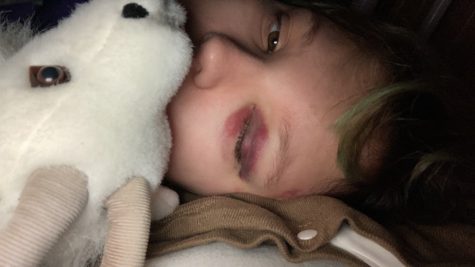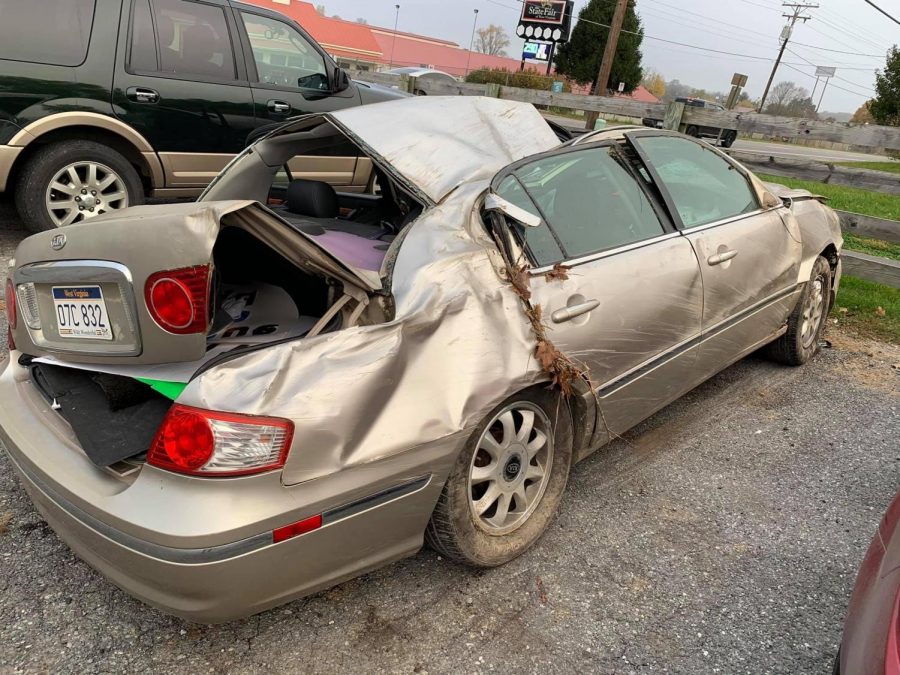My Car Accident and PTSD
January 12, 2021
I have post-traumatic stress disorder (PTSD) from a car crash that I was in recently. I was driving home at night, and as I was going around a turn my whole tire popped off, causing me to roll my car. It was terrifying, and I remember thinking as the car was rolling, “I’m going to die. There’s no way I’m making it out of this. This is going to kill me.” I was super lucky because there was a lady driving behind me and as soon as it happened she called 911 so I wasn’t at the site of the wreck for very long. My seatbelt was on, and that is probably what saved me, because I would have gone through the windshield or my sunroof if I had not been wearing it. Luckily, I did not suffer major damage, but my car was completely totaled. I walked away with just a concussion, some burns, and a black eye. That was two months ago, and I have not been able to sleep well since because I have nightmares about the crash almost every night. I still struggle with driving. When I drive over rocks it makes me panic because it reminds me of the feeling of driving off the road, and when I go on turns I have to slow down way more than normal because I am terrified I will roll my car again.
PTSD is a disorder that develops in some people who have experienced a shocking, scary, or dangerous event. Some factors that increase the risk of developing PTSD include living through dangerous events and traumas (including childhood traumas), getting hurt, seeing another person hurt or dead, feeling horror or extreme fear, or having little or no social support after the traumatic event. Not everyone who experiences trauma will develop PTSD. According to The Recovery Village, a rehabilitation facility in Groveport, Ohio, 70% of adults will experience at least one traumatic event in their life, but only 20% will develop PTSD. It can take years after the event to develop, or just a few weeks. Not everyone with PTSD has been through a dangerous event. Some people may develop PTSD after a friend or family member experiences danger or harm.
To be diagnosed with PTSD, an adult must have all of the following symptoms for at least one month
- a re-experiencing symptom (flashbacks, bad dreams, frightening thoughts)
- an avoidance symptom (staying away from places that are reminders of the event, avoiding thoughts or feelings related to the event)
- at least two reactivity symptoms (being easily startled, feeling tense or on edge, having difficulty sleeping, having angry outbursts)
- at least two cognition and mood symptoms (trouble remembering key features of the event, negative thoughts about oneself or the world, distorted feelings like guilt or blame, loss of interest in enjoyable activities)
Some things that may promote recovery after trauma are seeking out support from other people, finding a support group, and learning to feel good about one’s own actions in the face of danger. The main treatments for people with PTSD are medications, talk therapy, or both. PTSD affects people differently; further, a treatment that works for one person may not work for someone else. With more research, it may be possible to predict who is likely to develop PTSD and to prevent it.









Abbie Franks • Apr 19, 2021 at 9:49 am
Wow! Thanks for this enlightening article. We often don’t think about the mental scars. Thank goodness you were wearing your seatbelt! I wish you the best on your journey to healing.
Aaliyah Robertson • Jan 13, 2021 at 2:31 pm
As someone who is suffering with PTSD and has been for many years now, seeing someone who is from my school bring awareness to this topic is refreshing. I feel how you feel and I hope you’re recovering mentally from the trauma. This is an amazing write, as well!